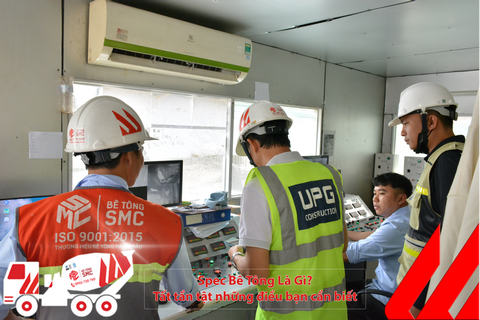Frequently asked Questions
Concrete engineering advice
Business contact
Maintenance of Fresh Concrete According to Technical Standards
To achieve perfect concrete quality in the construction process of sustainable projects, factors such as sand, gravel, cement, and mixing operations affect concrete quality. Especially, maintaining fresh concrete after pouring is extremely important. Neglecting this can lead to cracking, fracturing, and loss of aesthetic appeal in concrete, affecting the lifespan of the structure. Therefore, SMC Concrete aims to provide you with better techniques for maintaining fresh concrete through today's article.1. Why is Maintenance of Fresh Concrete Important?
To ensure the correct strength for concrete, maintaining appropriate moisture is crucial. This is done by slowing down the drying shrinkage process, allowing the concrete to reach sufficient hardness to resist cracking due to shrinkage. Additionally, proper maintenance of fresh concrete helps improve its strength, durability, water tightness, and abrasion resistance. This ensures that the concrete surface can withstand environmental impacts and long-term use. The concrete maintenance process is not just about maintaining moisture on the surface. In fact, it provides the necessary conditions for fresh concrete to develop the correct strength. Concrete strength depends on the hydration process, in which crystals in the concrete develop from the reaction between cement and water. Therefore, ensuring that concrete is properly maintained is crucial to achieving its optimal performance and durability during use.2. Proper Maintenance Techniques for Ready-Mixed Concrete
Below are some guidelines on how to properly maintain ready-mixed concrete that you may not know:2.1. Thin Nylon Covering
After pouring ready-mixed concrete, you can use a thin nylon sheet to cover the surface. Ensure that the nylon covers the entire concrete surface and is secured at the edges to prevent rapid evaporation of water. The nylon sheet should be kept for about 7-10 days to maintain moisture on the surface. Covering the surface of ready-mixed concrete also prevents surface pitting when it rains.2.2. Maintain Formwork in Place
Keep the formwork in place and spray water: Keep the formwork without dismantling it after pouring concrete. The formwork helps maintain moisture and water content for concrete. You can also directly spray water onto the formwork to enhance moisture. Especially in hot weather, regular maintenance is required within the first week. Dismantling formwork: Only when the concrete has reached sufficient strength should you remove the formwork. When dismantling the formwork, avoid strong impacts that could cause shock and affect the structure of the concrete. After dismantling, carefully inspect the concrete surface for cracks or fractures.Use props for large floor spans: If you are working on a large floor span with a span greater than 5m, use props to support the span and the floor spans. This helps minimize strong vibration and ensures stability for the concrete.
2.3. Water Spraying and Immersion to Maintain Moisture
Prioritize spraying water onto wooden formwork to maintain the best moisture and productivity. Even and regular water spraying avoids drying and cracking. During work, continuous watering and protection from direct rain are necessary to protect the concrete surface. After pouring ready-mixed concrete, continuous watering is required in the first week and regular maintenance thereafter. Covering the concrete maintenance surface with sawdust or straw helps maintain optimal moisture, especially in hot weather.3. SMC Concrete - High-Quality Ready-Mixed Concrete Supplier
Based on Technical Standards: SMC Concrete products manufactured at SMC Concrete Plants are always rigorously inspected for stable quality, compliant with the ISO 9001:2015 quality management system, and ready to meet applicable standards such as Vietnamese Standards (TCVN), American Standards (ASTM), British Standards (BS), and other technical requirements of customers. For more details, visit: [READY-MIXED CONCRETE]Other news
Currently, ready-mix concrete is a top choice for many construction projects—both large and small—thanks to its convenience, consistent quality, and high construction efficiency. With extensive experience supplying commercial concrete for numerous key projects in the Southern region, SMC proudly offers a diverse range of ready-mix concrete products to meet the technical requirements of every type of construction.
A Comprehensive Guide to Concrete Specs – Everything You Need to Know
A Complete Guide to Concrete Specs – a set of technical parameters including concrete grade, slump, compressive strength, aggregate size, and mix ratio. This article helps you understand how to define, apply, and control concrete quality according to TCVN standards and practical construction conditions.
How to check the concrete slump
In construction and civil engineering, concrete slump test (or simple slump test) is the work performed at the construction site or in the laboratory that usually determines and measures the hardness, consistency of samples. Concrete before pouring concrete or casting maintenance, research or experiment samples.




